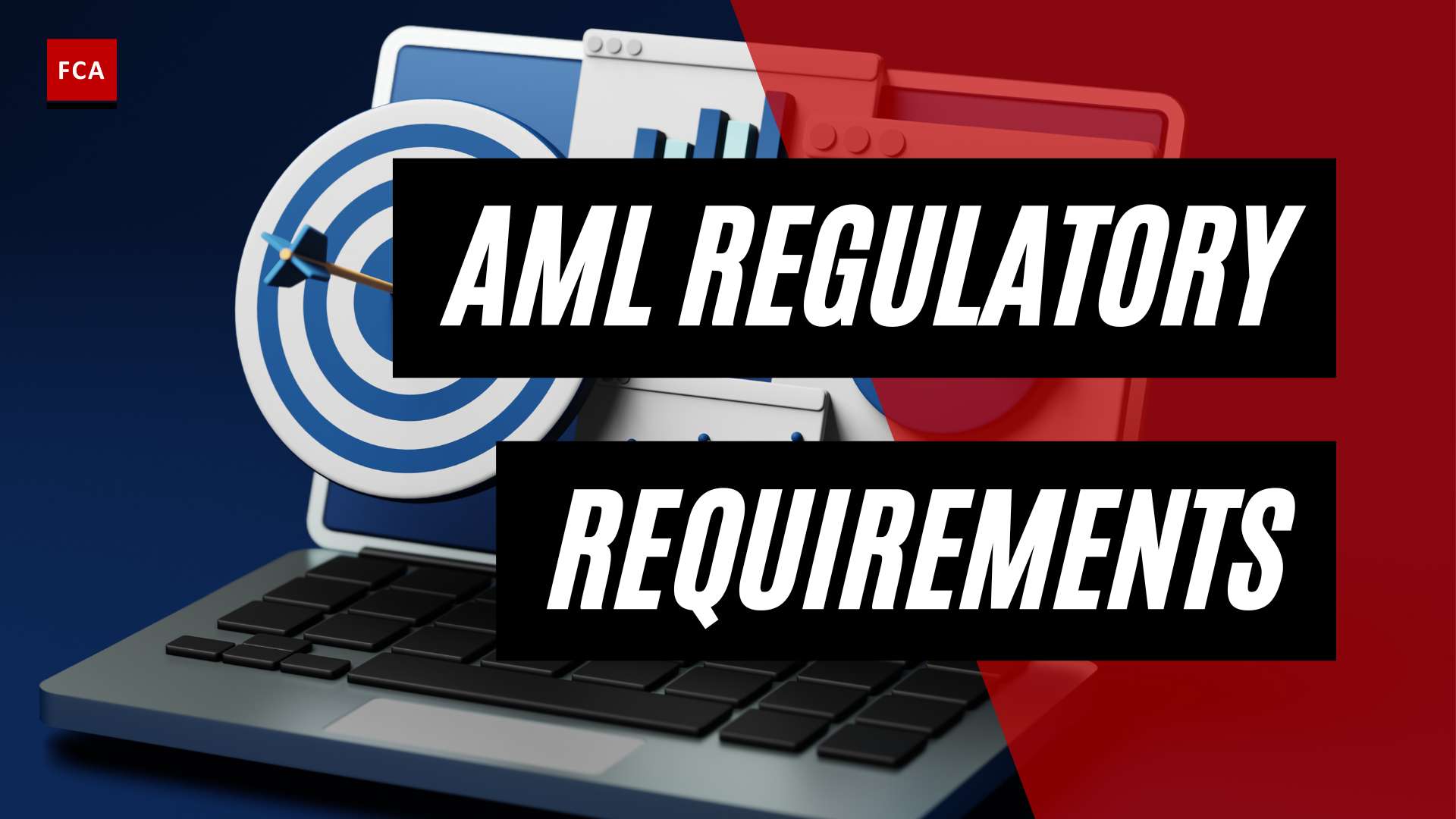Understanding AML Software Solutions
In the fight against financial crime, Anti-Money Laundering (AML) software solutions play a vital role in enabling organizations to effectively monitor and detect suspicious activities. These solutions automate risk management processes, making it easier for financial institutions to monitor customer information and detect abnormal transactions (Unit21). AML software leverages artificial intelligence and data science to optimize AML operations and management, leading to quicker, more agile, and more accurate performance of AML requirements (Unit21).
What is AML Software?
AML software, also known as Anti-Money Laundering software, is a powerful tool that helps financial institutions and businesses comply with regulatory requirements and combat financial crime. It automates, streamlines, and optimizes compliance tasks, enabling organizations to efficiently detect and prevent money laundering, terrorist financing, and other illicit financial activities.
AML software assists organizations in verifying customers, flagging suspicious transactions and behavior, screening sanctions and politically exposed persons (PEP) lists, and mitigating false positives faster and more effectively than manual processes. By automating these tasks, AML software allows compliance teams to focus their efforts on investigating and mitigating potential risks.
Benefits of AML Software
The implementation of AML software brings several benefits to organizations striving to maintain regulatory compliance and mitigate financial crime risks. Here are some key advantages of using AML software solutions:
-
Efficient Risk Management: AML software automates risk assessment processes, enabling organizations to identify and assess potential risks more efficiently. By analyzing large volumes of data, AML software can identify suspicious patterns and anomalies, helping organizations stay one step ahead of financial criminals.
-
Enhanced Compliance: AML software helps organizations comply with regulatory requirements by automating compliance tasks and ensuring adherence to AML regulations. It enables organizations to monitor and report suspicious activities, maintain accurate records, and demonstrate compliance during audits and examinations.
-
Reduced False Positives: AML software leverages advanced algorithms and machine learning techniques to minimize false positives, which are alerts triggered by legitimate transactions that appear suspicious. By reducing false positives, AML software allows compliance teams to focus their resources on investigating genuine risks.
-
Streamlined Operations: AML software streamlines compliance operations by automating manual processes. It eliminates the need for time-consuming manual reviews, reduces human error, and improves operational efficiency.
-
Timely Detection of Suspicious Activities: AML software continuously monitors financial transactions, enabling the timely detection and prevention of illegal financial activities such as money laundering and terrorist financing. By flagging suspicious activities, organizations can take immediate action to mitigate risks and protect their reputation.
By leveraging the capabilities of AML software, organizations can strengthen their anti-money laundering efforts, ensure regulatory compliance, and effectively combat financial crime.
In the next sections, we will explore the different types of AML software tools and their specific features that enable organizations to monitor transactions, detect suspicious activities, and comply with AML regulations.
AML Transaction Monitoring Tools
In the fight against illegal financial activities such as money laundering and terrorist financing, AML transaction monitoring tools play a crucial role in identifying and preventing suspicious transactions. By continuously monitoring financial activities, these tools assist businesses in maintaining compliance with AML regulations and mitigating financial crime risks.
Importance of AML Transaction Monitoring
AML transaction monitoring software is vital for businesses as it helps in the detection and prevention of illegal financial activities. By analyzing and scrutinizing financial transactions, these tools can identify patterns and anomalies that may indicate money laundering or other suspicious activities. This proactive approach ensures that financial institutions are able to take appropriate actions and report any suspicious transactions to the relevant authorities.
The rapid expansion and increasing complexity of financial transactions make effective transaction monitoring tools indispensable for financial institutions. With the help of advanced algorithms and technology, these tools can monitor transactions of any volume and identify suspicious activities, enabling the prevention of illegal financial activities.
Maintaining compliance with AML regulations is a top priority for financial institutions. Global regulatory bodies continuously publish new regulations to combat money laundering and terrorist financing. AML transaction monitoring tools provide real-time updates on regulatory changes, helping financial institutions stay up to date and implement necessary measures to maintain compliance. Failure to comply with AML regulations can result in hefty fines and reputational damage for financial institutions.
How AML Transaction Monitoring Works
AML transaction monitoring tools offer financial institutions access to vital information, including transaction data, customer information, and watchlist data. This information is crucial for screening transactions against high-risk individuals and organizations and ensuring compliance with AML regulations.
The process of AML transaction monitoring involves several steps:
-
Data Collection: Transaction data is collected from various sources, such as banking systems and payment processors.
-
Data Analysis: Advanced algorithms and machine learning techniques are applied to analyze the collected data. This analysis involves identifying patterns, detecting anomalies, and comparing transactions to known financial crime typologies.
-
Risk Scoring: Each transaction is assigned a risk score based on its characteristics and the behavior of the customer. High-risk transactions are flagged for further investigation.
-
Alert Generation: Suspicious transactions are flagged as alerts, which are then reviewed by compliance professionals. The alerts provide detailed information about the transaction and the associated risks.
-
Investigation and Reporting: Compliance professionals investigate the flagged alerts, gathering additional information and conducting further analysis if necessary. If a transaction is confirmed to be suspicious, it is reported to the appropriate authorities as required by AML regulations.
By leveraging advanced technologies such as artificial intelligence and machine learning, AML transaction monitoring software enhances its detection capabilities and keeps up with the evolving strategies used by money launderers.
In summary, AML transaction monitoring tools are crucial for financial institutions to maintain compliance, detect and prevent financial crimes, and safeguard their reputation. These tools enable proactive monitoring of transactions, identification of suspicious activities, and timely reporting, ultimately contributing to a safer and more secure financial system.
Key Features of AML Software
AML software solutions play a critical role in combating money laundering and financial crimes. These software tools offer a range of key features that help organizations verify customers, detect suspicious activities, and ensure compliance with AML regulations. Let’s explore some of the essential features of AML software:
Customer Verification and Screening
One of the primary functions of AML software is customer verification and screening. AML software solutions enable organizations to verify the identity of their customers and screen them against various watchlists, sanctions lists, and politically exposed persons (PEP) lists. By conducting thorough customer due diligence, organizations can identify high-risk individuals or entities and take appropriate actions to mitigate potential risks.
AML software automates the customer screening process and allows for real-time checks, ensuring that organizations can promptly identify any matches with restricted individuals or entities. This feature helps prevent onboarding individuals involved in illegal activities, safeguarding the organization’s reputation and compliance with AML regulations.
Suspicious Activity Detection
AML software is equipped with sophisticated algorithms and data analytics capabilities to detect suspicious activities within financial transactions. The software continuously monitors transaction data, customer behavior, and known financial crime typologies to identify patterns or anomalies that may indicate potential money laundering or other illicit activities.
By scrutinizing each transaction individually and in the context of the customer’s behavior, AML software can identify suspicious patterns that may not be apparent through manual review. This enhanced detection capability allows organizations to mitigate risks and respond promptly to potential threats.
Compliance with AML Regulations
Compliance with AML regulations is a critical aspect of any organization’s risk management strategy. AML software solutions are designed to help organizations meet their compliance obligations effectively. These software tools keep organizations up-to-date with the latest AML regulations and provide necessary functionalities to ensure adherence.
AML software streamlines compliance processes by automating regulatory reporting, record-keeping, and audit trail management. The software generates comprehensive reports and transaction histories, facilitating regulatory audits and demonstrating compliance efforts.
The advanced features of AML software, such as transaction monitoring, customer verification, and compliance management, enable organizations to strengthen their AML programs and mitigate the risks associated with money laundering and financial crimes. By leveraging these key features, organizations can enhance their ability to detect and prevent illicit activities, ensuring a safer and more secure financial environment.
The Role of AML Monitoring Software
AML monitoring software plays a crucial role in empowering compliance and mitigating financial crime risks for financial institutions. By leveraging advanced technologies such as artificial intelligence and machine learning, AML monitoring software automates risk management processes, making it easier for financial institutions to monitor customer information and detect abnormal transactions (Unit21). Let’s explore the key roles of AML monitoring software in more detail.
Mitigating Financial Crime Risks
Financial institutions face significant risks associated with money laundering, terrorist financing, and other forms of financial crime. AML monitoring software helps in the detection and prevention of these illegal activities by continuously monitoring financial transactions. Through the use of advanced algorithms and technology, AML monitoring software effectively analyzes large volumes of transactions and identifies suspicious activities (Sanction Scanner).
By screening transactions against high-risk individuals and organizations, AML monitoring software enables financial institutions to identify and flag suspicious activities promptly. This proactive approach helps prevent illegal financial activities, safeguard the institution’s reputation, and protect against financial sanctions and penalties (Sanction Scanner). In 2018 alone, global financial regulators imposed fines exceeding $2.9 billion for AML violations, highlighting the importance of robust AML monitoring tools (Sanction Scanner).
Ensuring Regulatory Compliance
Financial institutions are subject to stringent AML regulations globally. Compliance with these regulations is essential to maintain the integrity of the financial system and prevent illicit activities. AML monitoring software plays a vital role in ensuring regulatory compliance by providing real-time updates on regulatory changes. This helps financial institutions stay up to date with the evolving AML landscape and adapt their monitoring processes accordingly (Sanction Scanner).
AML monitoring software enables financial institutions to effectively screen transactions against watchlists, identify potential money laundering patterns, and generate comprehensive reports for regulatory authorities. By automating compliance tasks, AML monitoring software streamlines and optimizes the compliance process, reducing the risk of non-compliance and potential financial penalties (Unit21).
With the increasing complexity of financial transactions and the constant threat of evolving money laundering techniques, financial institutions need robust AML monitoring software to stay ahead. By leveraging advanced technologies and real-time data analysis, AML monitoring software empowers compliance teams to efficiently manage risks, detect suspicious activities, and ensure adherence to AML regulations.
AML Software and Financial Institutions
Financial institutions face significant challenges when it comes to combating money laundering and other financial crimes. The implementation of robust AML software plays a crucial role in empowering these institutions to effectively monitor and mitigate these risks.
Importance of AML Software for Financial Institutions
AML software is a valuable solution for financial institutions in the battle against financial crime. By automating, streamlining, and optimizing compliance tasks, it helps organizations comply with required AML regulations (Unit21). Here are some key reasons why AML software is essential for financial institutions:
-
Efficient Monitoring: AML software automates risk management processes, making it easier for financial institutions to monitor customer information and detect abnormal transactions (Unit21). With the volume and complexity of financial transactions increasing, manual monitoring becomes impractical. AML software enables institutions to monitor transactions more efficiently, ensuring that suspicious activities are flagged and investigated promptly.
-
Enhanced Compliance: Financial institutions need to comply with ever-changing AML regulations globally. AML software provides real-time updates on regulatory changes, helping institutions maintain compliance and avoid hefty fines for non-compliance. It assists in verifying customers, screening sanctions and PEP lists, and mitigating false positives faster and more effectively than manual processes (Unit21). The software ensures that institutions have the necessary tools to meet regulatory requirements.
-
Risk Mitigation: Lack of proper AML transaction monitoring can expose financial institutions to significant risks, leading to financial sanctions. AML transaction monitoring tools help minimize risks associated with illegal financial activities by enabling institutions to maintain compliance and detect financial crimes more effectively. They assist in identifying suspicious transactions and activities that are indicative of money laundering, viewing each transaction individually and in the context of customer behavior and known financial crime typologies (Tookitaki). By leveraging advanced algorithms and technology, AML software provides financial institutions with the tools necessary to identify and address potential risks.
Case Studies: AML Software Implementation
The effectiveness of AML software in detecting and preventing financial crimes is evident through various case studies. Here are a few examples:
-
Case Study A: XYZ Bank, a global financial institution, implemented AML software to enhance its compliance efforts. The software enabled them to automate their customer verification and screening processes, resulting in improved efficiency and reduced false positives. With the implementation of AML software, XYZ Bank successfully identified and reported several suspicious transactions, contributing to a more robust AML program.
-
Case Study B: ABC Credit Union implemented AML software to strengthen its transaction monitoring capabilities. The software allowed them to monitor a large volume of transactions effectively, detect unusual patterns, and flag potentially suspicious activities. As a result, ABC Credit Union was able to identify and report a significant money laundering operation, leading to the disruption of illicit financial activities.
These case studies demonstrate how AML software implementation has been instrumental in empowering financial institutions to proactively combat financial crimes. With the right AML software in place, institutions can significantly enhance their ability to detect and prevent money laundering and other illicit financial activities.
In conclusion, AML software plays a vital role in the fight against financial crime for financial institutions. By automating compliance tasks, facilitating efficient monitoring, promoting regulatory compliance, and mitigating risks, AML software empowers institutions to stay ahead in an ever-evolving landscape of financial crime. To choose the right AML software for your institution, consider factors such as functionality, scalability, regulatory compliance, and reputation when evaluating AML software providers.
Considerations for Choosing AML Software
Implementing effective AML software is crucial for financial institutions to comply with regulations and mitigate the risks associated with financial crime. When selecting AML software, there are several factors that professionals working in compliance, risk management, anti-money laundering, and anti-financial crime should consider.
Factors to Consider when Selecting AML Software
-
Compliance with AML Regulations: The chosen AML software should align with the regulatory requirements applicable to the financial institution’s jurisdiction. It should facilitate customer due diligence, risk assessment, transaction monitoring, record-keeping, and reporting processes in accordance with the relevant AML laws and regulations. This ensures that the institution remains compliant and avoids potential penalties or reputational damage.
-
Functionality and Customization: AML software should offer a comprehensive range of features that meet the institution’s specific needs. It should provide capabilities for customer verification and screening, suspicious activity detection, sanctions screening, and transaction monitoring. The software should also allow for customization, enabling the institution to tailor the system to its unique requirements.
-
Integration and Compatibility: It is essential to evaluate how well the AML software integrates with existing systems and databases within the financial institution. Seamless integration ensures a smooth flow of data and reduces manual efforts. Compatibility with various data sources and formats allows for efficient data analysis and enhances the effectiveness of the AML monitoring process.
-
Scalability and Flexibility: As the institution grows, the AML software should be scalable to accommodate increasing transaction volumes and expanding customer bases. It should also be flexible enough to adapt to evolving regulatory requirements and industry best practices. This ensures that the institution can effectively manage AML risks without encountering limitations due to software constraints.
-
User-Friendliness and Training: The usability of the AML software is crucial for user adoption and efficiency. It should have an intuitive interface that simplifies navigation and minimizes the learning curve for users. Additionally, the software provider should offer comprehensive training and ongoing support to ensure that staff can fully utilize the software’s features and functionalities.
Evaluating AML Software Providers
When evaluating AML software providers, financial institutions should consider the following:
-
Reputation and Industry Experience: Research the reputation and track record of the software provider within the AML industry. Look for providers with extensive experience, a proven track record, and positive customer reviews. This indicates their ability to deliver reliable and effective AML software solutions.
-
Comprehensive Support and Maintenance: Ensure that the software provider offers comprehensive support and maintenance services. This includes regular software updates, technical assistance, and access to customer support channels. A reliable provider should be responsive to any issues or inquiries and provide timely resolutions.
-
Data Security and Compliance: Due to the sensitive nature of customer and transaction data, data security and compliance should be a top priority. Evaluate the security measures implemented by the software provider, such as data encryption, access controls, and adherence to industry best practices. Confirm that the provider complies with relevant data protection regulations and has appropriate certifications.
-
Cost and Return on Investment: Consider the cost of implementing and maintaining the AML software, including any licensing fees, customization costs, and ongoing support expenses. Assess the potential return on investment by considering the software’s ability to enhance operational efficiency, reduce manual efforts, and mitigate financial crime risks effectively.
By carefully considering these factors and evaluating AML software providers, financial institutions can make informed decisions when selecting AML software solutions. Implementing the right software enables institutions to meet regulatory requirements, enhance compliance processes, and effectively combat money laundering and financial crime. For a trusted AML software provider, you can explore the solutions offered by Sanction Scanner. They offer comprehensive software solutions that aid financial institutions in adhering to AML laws and regulations, facilitating various compliance activities to combat financial crimes effectively.
Future Trends in AML Software
As technology continues to evolve, so does the field of anti-money laundering (AML) software. In this section, we will explore two key future trends in AML software: advancements in AI and machine learning, and regulatory changes and their impact on AML software.
Advancements in AI and Machine Learning
AML software solutions are increasingly leveraging advancements in artificial intelligence (AI) and machine learning to enhance their detection capabilities. By analyzing vast amounts of data and identifying patterns, AI-powered AML software can quickly and accurately identify suspicious transactions and potential money laundering activities.
The use of AI and machine learning algorithms enables AML software to adapt and learn from new and emerging money laundering techniques. This dynamic approach allows for more efficient and proactive monitoring, as the software can continuously update its detection models based on evolving trends and patterns in financial transactions. As a result, financial institutions can stay one step ahead of money launderers and better protect themselves against financial crime.
Regulatory Changes and AML Software
Regulatory bodies worldwide are increasingly focusing on enforcing stringent AML compliance laws, making it imperative for financial institutions to invest in robust AML monitoring software. Non-compliance can lead to significant financial penalties, reputation damage, and even legal consequences.
The evolving regulatory landscape necessitates regular updates and enhancements to AML software. Software providers must ensure that their solutions adhere to the latest regulatory requirements and offer functionalities that help financial institutions meet their compliance obligations. This includes features such as customer verification and screening, suspicious activity detection, and the ability to generate comprehensive reports for regulatory authorities.
Financial institutions must closely monitor regulatory changes and work with AML software providers to ensure their systems remain aligned with the latest requirements. By investing in advanced AML monitoring software, financial institutions can improve operational efficiency, reduce manual efforts in compliance processes, and enhance the accuracy of identifying suspicious transactions, ultimately safeguarding their reputation and financial integrity.
As technology and regulations continue to evolve, the future of AML software holds exciting possibilities for more sophisticated detection capabilities, streamlined compliance processes, and enhanced risk mitigation strategies. By staying informed about the latest advancements and regulatory changes in the field of AML software, financial institutions can empower themselves to effectively combat money laundering and protect the integrity of the global financial system.








